Stephanie Faris's Blog, page 48
April 24, 2015
U is for Urban Cowboy
This month I'm participating in the A to Z Challenge. My theme is the 80s. Today's letter is:

In 1980, John Travolta was one of the hottest actors in the movie industry. So the release of this movie was highly anticipated:

The movie epitomized the fashion of the time. In 1980, country-western music exploded in popularity with country music songs like this one...
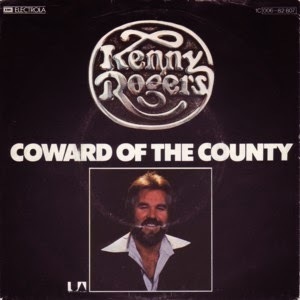
...this one...
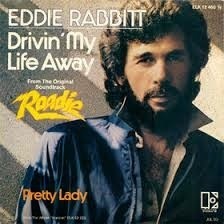
...and this one...
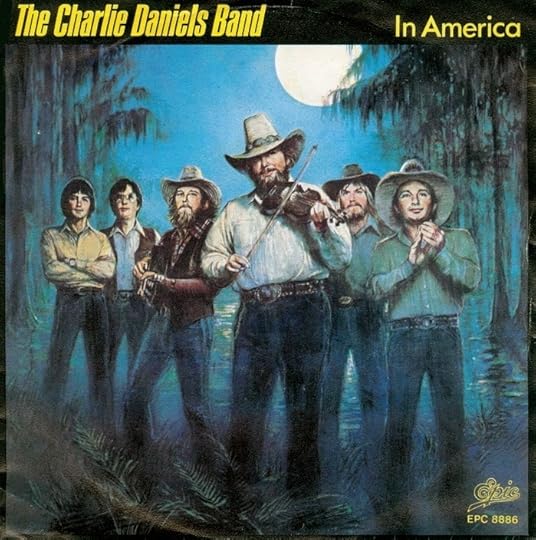
...ranking high on Top 40 charts as well as the country music charts.
At the same time, country-western attire was very popular. The phenomenal success of this show might have had a little something to do with that.
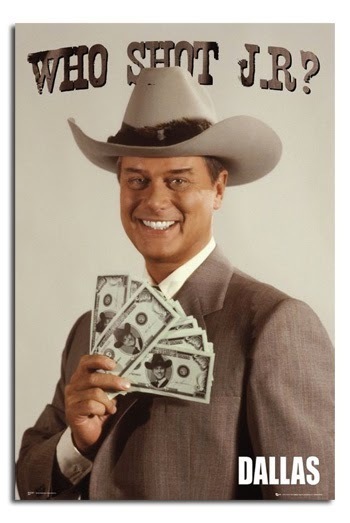
Urban Cowboy was filled with sappy melodrama and dark moments--a trend we'd see in other movies in the 80s. Debra Winger was gritty and realistic (and whiny and annoying) and John Travolta was oh-so-dreamy to women who were old enough to appreciate it. (I was ten.)

Perhaps the most notable thing about Urban Cowboy was its soundtrack. The songs were all over the radio that year.

There were no fewer than six top-ten hits from the soundtrack, including Lookin' for Love, Stand By Me, and Look What You've Done to Me. The country music trend that followed has been called the Urban Cowboy Movement. John Travolta had that power at the time. That was before Scientology gained control of him.

Have you seen Urban Cowboy? What's your favorite John Travolta movie?

In 1980, John Travolta was one of the hottest actors in the movie industry. So the release of this movie was highly anticipated:

The movie epitomized the fashion of the time. In 1980, country-western music exploded in popularity with country music songs like this one...

...this one...

...and this one...

...ranking high on Top 40 charts as well as the country music charts.
At the same time, country-western attire was very popular. The phenomenal success of this show might have had a little something to do with that.

Urban Cowboy was filled with sappy melodrama and dark moments--a trend we'd see in other movies in the 80s. Debra Winger was gritty and realistic (and whiny and annoying) and John Travolta was oh-so-dreamy to women who were old enough to appreciate it. (I was ten.)

Perhaps the most notable thing about Urban Cowboy was its soundtrack. The songs were all over the radio that year.

There were no fewer than six top-ten hits from the soundtrack, including Lookin' for Love, Stand By Me, and Look What You've Done to Me. The country music trend that followed has been called the Urban Cowboy Movement. John Travolta had that power at the time. That was before Scientology gained control of him.

Have you seen Urban Cowboy? What's your favorite John Travolta movie?
Published on April 24, 2015 03:00
April 23, 2015
T is for Teen Dance Clubs
This month I'm participating in the A to Z Challenge. My theme is the 80s. Today's letter is:

Being a teenager is tough. You're too young to drink but you want to socialize. In fact, it's probably the time in your life when it's most important to get out of the house and meet new people. If only you could hang out in clubs like 20-somethings do.

In the 80s, a new trend emerged. It's important to note that it became so popular, it appeared even in normal-sized cities. Those of us who don't live in New York City and Los Angeles don't have access to these things like those of you in big cities. In the 80s, even those of us in "middle America" got to enjoy the pleasure of teen clubs.

When they first opened, teen clubs had crazy-long lines like this one.
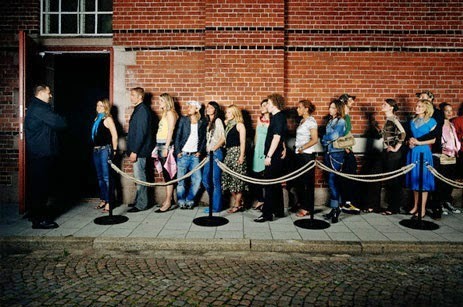
After about six months, teen clubs looked like this.

That's the problem with teenagers. They're fickle. If you build something, they'll be fanatics at first. Then they'll get bored. They're like the dog from Up.
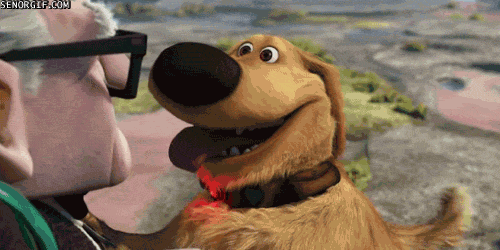
But I still have fond memories of crazy, high-calorie virgin drinks...

And bad 1985 Eddie Murphy party music.
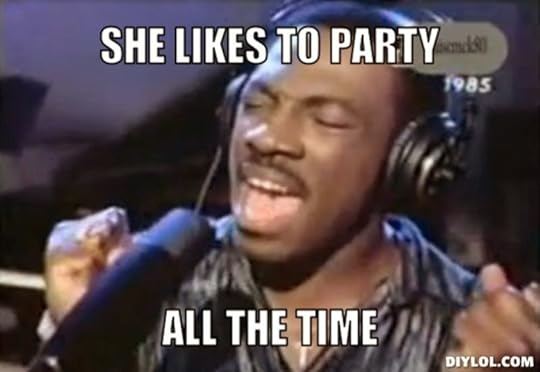
In fact, every time I hear that song, I think of hanging out in that teen club in 1985 with my friends.
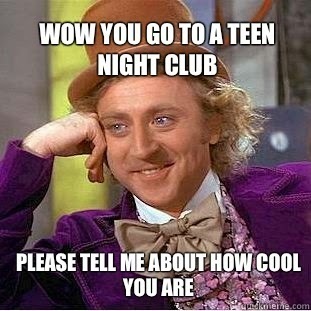
Do you think there's a hangout that could hold teens' interest for more than six months?
A little Eddie Murphy and Rick James for your Thursday!

Being a teenager is tough. You're too young to drink but you want to socialize. In fact, it's probably the time in your life when it's most important to get out of the house and meet new people. If only you could hang out in clubs like 20-somethings do.

In the 80s, a new trend emerged. It's important to note that it became so popular, it appeared even in normal-sized cities. Those of us who don't live in New York City and Los Angeles don't have access to these things like those of you in big cities. In the 80s, even those of us in "middle America" got to enjoy the pleasure of teen clubs.

When they first opened, teen clubs had crazy-long lines like this one.

After about six months, teen clubs looked like this.

That's the problem with teenagers. They're fickle. If you build something, they'll be fanatics at first. Then they'll get bored. They're like the dog from Up.

But I still have fond memories of crazy, high-calorie virgin drinks...

And bad 1985 Eddie Murphy party music.

In fact, every time I hear that song, I think of hanging out in that teen club in 1985 with my friends.

Do you think there's a hangout that could hold teens' interest for more than six months?
A little Eddie Murphy and Rick James for your Thursday!
Published on April 23, 2015 03:00
April 22, 2015
S is for Soap Operas
This month I'm participating in the A to Z Challenge. My theme is the 80s. Today's letter is:

It may be impossible to believe, especially if you've been stranded at home with nothing but daytime TV in the past few years, but at one time, soap operas were event TV. This was an era before we voted people off islands or followed middle-aged housewives around with cameras. It was the era of Bo and Hope...
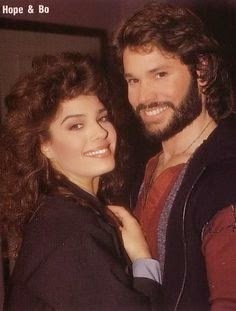
And Victor and Nikki...
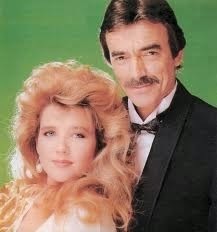
And, of course, the most popular soap opera couple of all time--the couple that put the words "soap opera super couple" on the map: Luke and Laura.
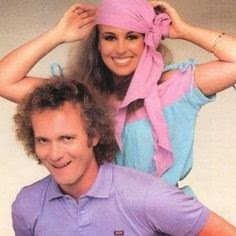
The best thing about soaps? They brought people together. Viewers couldn't tweet while they watched. They just watched it and talked about it the next day.
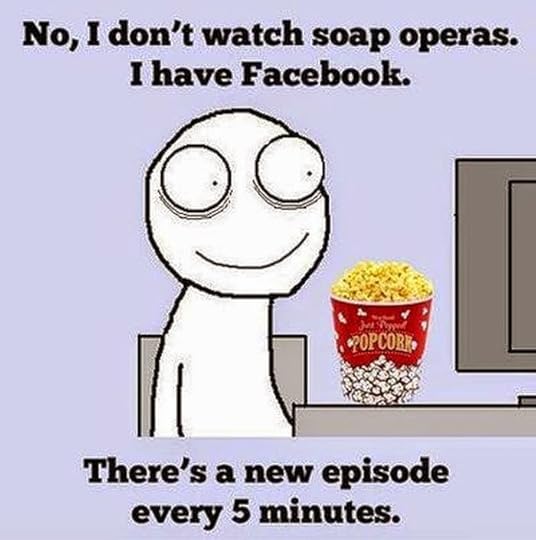
Soap operas actually date back to the days of radio, making their way to TV in the 1940s. Initially, the shows were designed to take place exclusively within the confines of a studio, making it easier to air five episodes a week, 52 weeks a year.
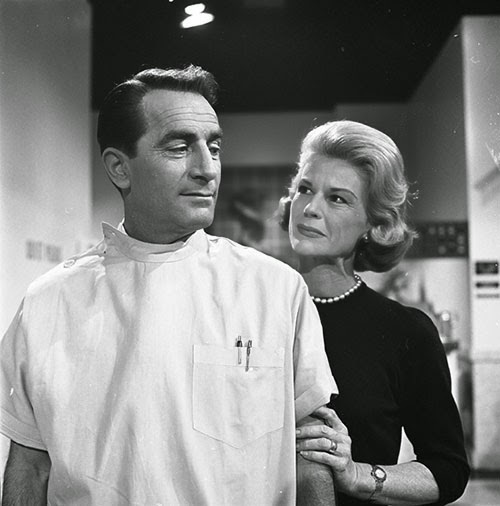
In the late 70s/early 80s, soaps began to up the ante, leaving the studio to travel to exotic locations. Interestingly, as its audience began to shrink because women were filling the workforce, soap operas reached a height of popularity they had never seen before (or since). Who was watching these soaps?

Yep, teens. Tweens. I can't speak for all of us, but I personally became interested when my babysitter (along with the rest of the world) made this wedding must-watch TV:
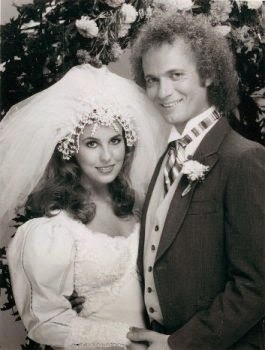
Luke and Laura got off to a rocky start. He raped her in a disco--which would have been a huge scandal but some of us had no idea about all of that. We just knew this couple was getting married and the world cared. So we cared, too. Plus, Genie Francis was beautiful.
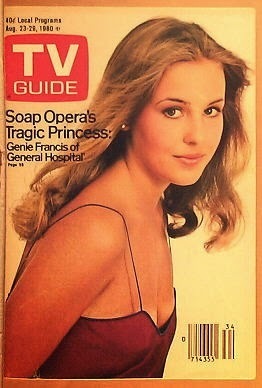
After they got married, Luke and Laura had a whole epic adventure that involved her wearing a dark wig and pretending her name was Lucy. I'll be darned if I can remember what all that was about, but people seemed to love it.

For the rest of the 80s, soaps enjoyed a loyal fan base made up of teens, as well as adults with VCRs. There were supercouples...
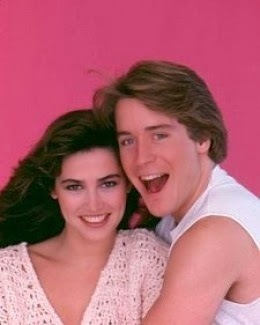
And future stars...
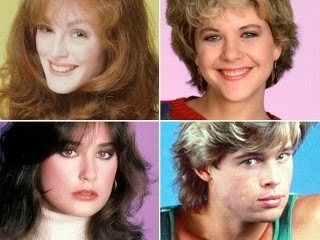
And by the 90s, the whole thing had pretty much started a slow downward slide. It's a slide that is likely permanent. But we'll always have all the soap opera actresses now starring on the Real Housewives of Beverly Hills.

Did you ever watch daytime soap operas?

It may be impossible to believe, especially if you've been stranded at home with nothing but daytime TV in the past few years, but at one time, soap operas were event TV. This was an era before we voted people off islands or followed middle-aged housewives around with cameras. It was the era of Bo and Hope...

And Victor and Nikki...

And, of course, the most popular soap opera couple of all time--the couple that put the words "soap opera super couple" on the map: Luke and Laura.

The best thing about soaps? They brought people together. Viewers couldn't tweet while they watched. They just watched it and talked about it the next day.

Soap operas actually date back to the days of radio, making their way to TV in the 1940s. Initially, the shows were designed to take place exclusively within the confines of a studio, making it easier to air five episodes a week, 52 weeks a year.

In the late 70s/early 80s, soaps began to up the ante, leaving the studio to travel to exotic locations. Interestingly, as its audience began to shrink because women were filling the workforce, soap operas reached a height of popularity they had never seen before (or since). Who was watching these soaps?

Yep, teens. Tweens. I can't speak for all of us, but I personally became interested when my babysitter (along with the rest of the world) made this wedding must-watch TV:

Luke and Laura got off to a rocky start. He raped her in a disco--which would have been a huge scandal but some of us had no idea about all of that. We just knew this couple was getting married and the world cared. So we cared, too. Plus, Genie Francis was beautiful.

After they got married, Luke and Laura had a whole epic adventure that involved her wearing a dark wig and pretending her name was Lucy. I'll be darned if I can remember what all that was about, but people seemed to love it.

For the rest of the 80s, soaps enjoyed a loyal fan base made up of teens, as well as adults with VCRs. There were supercouples...

And future stars...

And by the 90s, the whole thing had pretty much started a slow downward slide. It's a slide that is likely permanent. But we'll always have all the soap opera actresses now starring on the Real Housewives of Beverly Hills.

Did you ever watch daytime soap operas?
Published on April 22, 2015 03:00
April 21, 2015
R is for Rubik’s Cube
This month I'm participating in the A to Z Challenge. My theme is the 80s. Today's letter is:

It's rare that a toy comes along that sets of a national frenzy. But in the early 1980s, one toy got us all.

The Rubik's Cube was actually invented in the mid-70s but it took a while to flood the market. The original name was the Magic Cube. It was renamed for its founder, Erno Rubik, who was a Hungarian architect and professor of architecture.
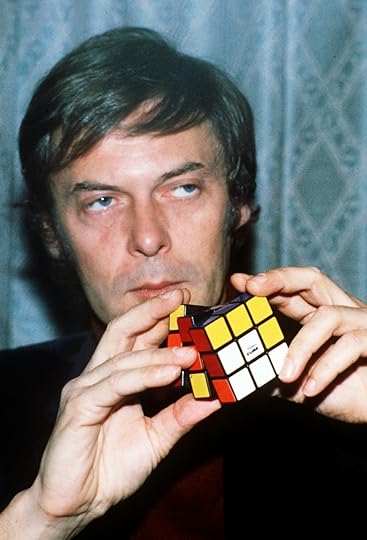
The Rubik's Cube may be the top-selling toy of all time, but it wasn't the staple of the 80s that pop culture would want you to believe. Like everything else, it was here and then gone again in a brief period of time.
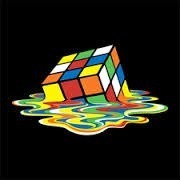
Most of us had a hard time figuring it out. In fact, Rubik himself had a rough time solving the cube. He created a block, made a few turns, then realized he had a mix of colors but no idea to get them back to their original solid state.
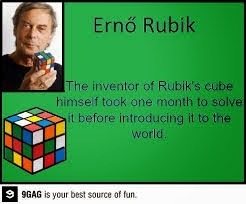
For the brief couple of months we were all into the Rubik's Cube trend, we figured a few things out. One, you could remove all the stickers and put them on different cubes to "solve" the puzzle. Or you could get a screwdriver and disassemble the thing, then put it back together again.

You can still buy Rubik's Cubes today. We have one. My husband got it as a promotional item at a conference. But somehow it isn't as fun if you're the only one who has one.
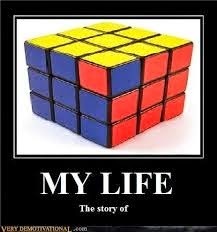
What's the most difficult puzzle you've ever solved?

It's rare that a toy comes along that sets of a national frenzy. But in the early 1980s, one toy got us all.

The Rubik's Cube was actually invented in the mid-70s but it took a while to flood the market. The original name was the Magic Cube. It was renamed for its founder, Erno Rubik, who was a Hungarian architect and professor of architecture.

The Rubik's Cube may be the top-selling toy of all time, but it wasn't the staple of the 80s that pop culture would want you to believe. Like everything else, it was here and then gone again in a brief period of time.

Most of us had a hard time figuring it out. In fact, Rubik himself had a rough time solving the cube. He created a block, made a few turns, then realized he had a mix of colors but no idea to get them back to their original solid state.

For the brief couple of months we were all into the Rubik's Cube trend, we figured a few things out. One, you could remove all the stickers and put them on different cubes to "solve" the puzzle. Or you could get a screwdriver and disassemble the thing, then put it back together again.

You can still buy Rubik's Cubes today. We have one. My husband got it as a promotional item at a conference. But somehow it isn't as fun if you're the only one who has one.

What's the most difficult puzzle you've ever solved?
Published on April 21, 2015 03:00
April 20, 2015
Q is for Quiet Riot
This month I'm participating in the A to Z Challenge. My theme is the 80s. Today's letter is:

As a child of the 80s, I have to say this isn't one of our proudest moments. For reasons I've never quite understood, at some point in the 80s, the music industry decided what rock stars really needed was a big dose of "pretty."
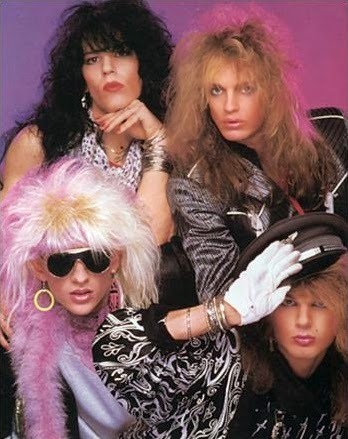
Called "glam metal," the movement seemed to be an attempt to contrast a band's look with its sound. The band would be doused in lipstick, eyeliner, and hairspray, but they would scream and play guitar as though they were violent ax murderers.

Quiet Riot was one of the many bands that attempted the look because it was "in" but only in small measure.
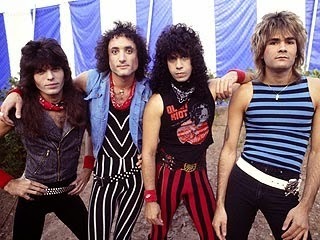
Van Halen was another.

But glam rock can be traced all the way back to the 70s. 70s children will remember this band:
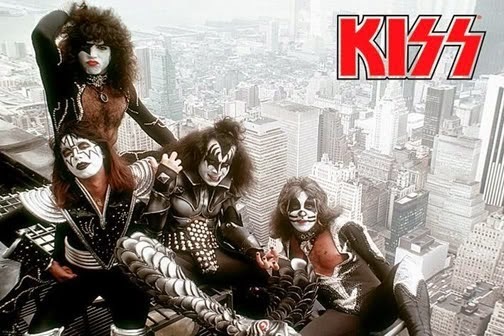
At the time, they stood out. By the mid-80s, though, it was hard to tell glam rock bands apart. They have since earned the nickname "hair bands" because of all that hair.
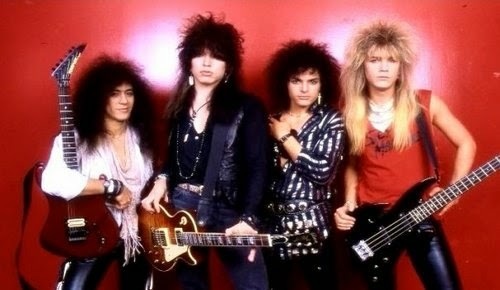
By the mid 90s, the screaming seemed to stop in favor of a new, more subdued form of rock. Today glam rock exists mostly in our memories, although there are a few little-known bands always circulating. Believe it or not, this form of rock still has a fan base.
Do you think glam rock should have a revival?

As a child of the 80s, I have to say this isn't one of our proudest moments. For reasons I've never quite understood, at some point in the 80s, the music industry decided what rock stars really needed was a big dose of "pretty."

Called "glam metal," the movement seemed to be an attempt to contrast a band's look with its sound. The band would be doused in lipstick, eyeliner, and hairspray, but they would scream and play guitar as though they were violent ax murderers.

Quiet Riot was one of the many bands that attempted the look because it was "in" but only in small measure.

Van Halen was another.

But glam rock can be traced all the way back to the 70s. 70s children will remember this band:

At the time, they stood out. By the mid-80s, though, it was hard to tell glam rock bands apart. They have since earned the nickname "hair bands" because of all that hair.

By the mid 90s, the screaming seemed to stop in favor of a new, more subdued form of rock. Today glam rock exists mostly in our memories, although there are a few little-known bands always circulating. Believe it or not, this form of rock still has a fan base.
Do you think glam rock should have a revival?
Published on April 20, 2015 03:00
April 18, 2015
P is for Parachute Pants
This month I'm participating in the A to Z Challenge. My theme is the 80s. Today's letter is:

Parachute pants are often associated with the 80s but in truth, they were only popular for a short period of time. These are parachute pants:
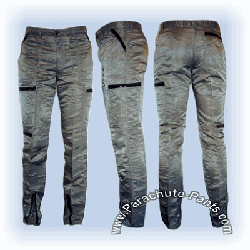
They're usually confused with the pants M.C. Hammer made famous in the very early 90s in his U Can't Touch This video.
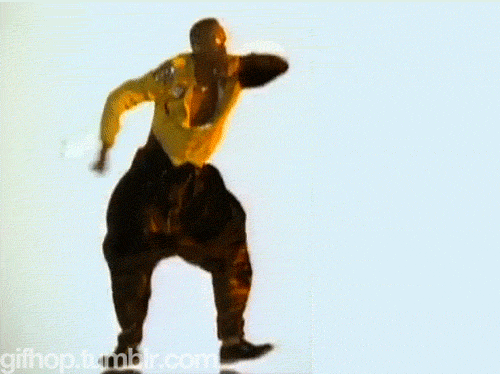
Break dancing popularized parachute pants, which were tight synthetic nylon that felt just like a parachute to the touch.
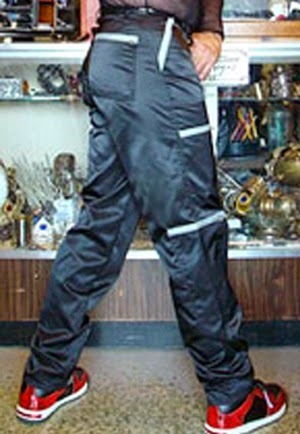
Although they were around as early as the late 70s, Bugle Boy successfully marketed parachute pants to teenage boys, taking them to their height of popularity in 1984. Soon they were replaced by the new trend...two-toned jeans.
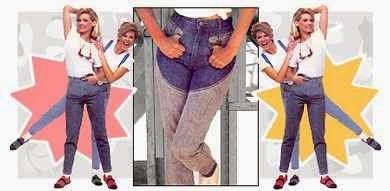
But parachute pants are forever doomed to be mistaken for Hammer pants. One more time, for the record...parachute pants:
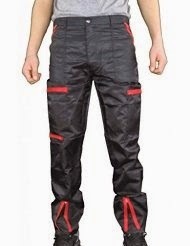
Hammer pants:
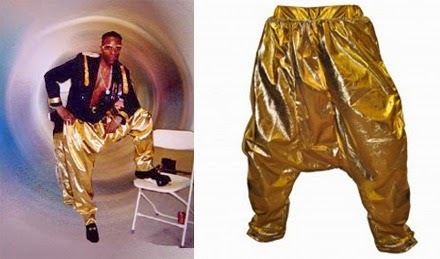
Hammer time!

Parachute pants are often associated with the 80s but in truth, they were only popular for a short period of time. These are parachute pants:

They're usually confused with the pants M.C. Hammer made famous in the very early 90s in his U Can't Touch This video.

Break dancing popularized parachute pants, which were tight synthetic nylon that felt just like a parachute to the touch.

Although they were around as early as the late 70s, Bugle Boy successfully marketed parachute pants to teenage boys, taking them to their height of popularity in 1984. Soon they were replaced by the new trend...two-toned jeans.

But parachute pants are forever doomed to be mistaken for Hammer pants. One more time, for the record...parachute pants:

Hammer pants:

Hammer time!
Published on April 18, 2015 03:00
April 17, 2015
O is for Off-the-Shoulder Shirts
This month I'm participating in the A to Z Challenge. My theme is the 80s. Today's letter is:

In the days before the Kardashians inspired our nation's fashion choices, it only took one movie to kick off an international fashion craze. For fashionistas in 1983, that movie was Flashdance.
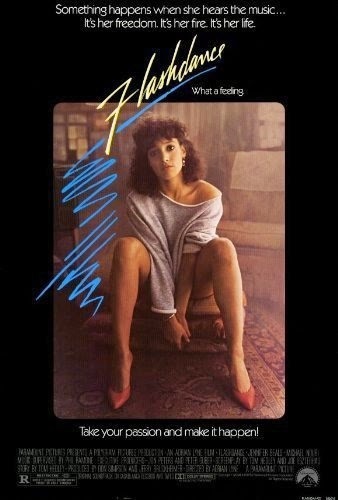
Jennifer Beals' off-the-shoulder sweatshirt can once again be seen in stores as fashion designers find new ways to reinvent the 80s.
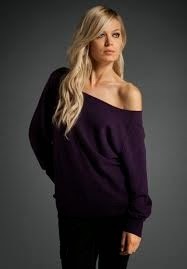
Flashdance brought a little bit of rebellion to 80s fashion. At the time, much of what we were seeing was more straight-laced. Shoulder pads, silk, big bows in front...

Along came Flashdance and its tribute to urban street fashion. Its main character was a female welder in Philadelphia who dreams of being a ballerina. Her torn sweatshirt and jeans were revolutionary at the time. Teens loved it.

Jeans with torn knees became huge later in the 80s, by the way. Some people even drew on their knees. Madonna wore lace leggings under hers.
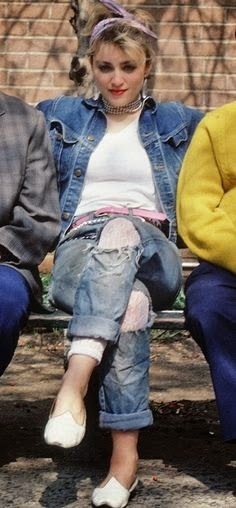
What do you know? Ripped jeans are in style yet again. It seems the Flashdance look will continue to resurface every couple of decades until we're all wearing unicolored futuristic spacesuits.

What's your favorite fashion decade?

In the days before the Kardashians inspired our nation's fashion choices, it only took one movie to kick off an international fashion craze. For fashionistas in 1983, that movie was Flashdance.

Jennifer Beals' off-the-shoulder sweatshirt can once again be seen in stores as fashion designers find new ways to reinvent the 80s.

Flashdance brought a little bit of rebellion to 80s fashion. At the time, much of what we were seeing was more straight-laced. Shoulder pads, silk, big bows in front...

Along came Flashdance and its tribute to urban street fashion. Its main character was a female welder in Philadelphia who dreams of being a ballerina. Her torn sweatshirt and jeans were revolutionary at the time. Teens loved it.

Jeans with torn knees became huge later in the 80s, by the way. Some people even drew on their knees. Madonna wore lace leggings under hers.

What do you know? Ripped jeans are in style yet again. It seems the Flashdance look will continue to resurface every couple of decades until we're all wearing unicolored futuristic spacesuits.

What's your favorite fashion decade?
Published on April 17, 2015 03:00
April 16, 2015
N is for New Coke
This month I'm participating in the A to Z Challenge. My theme is the 80s. Today's letter is:

The history of Coca-Cola takes us all the way back to 1863, when an entrepreneur invented Coca Wine. The beverage combined wine with cocaine.
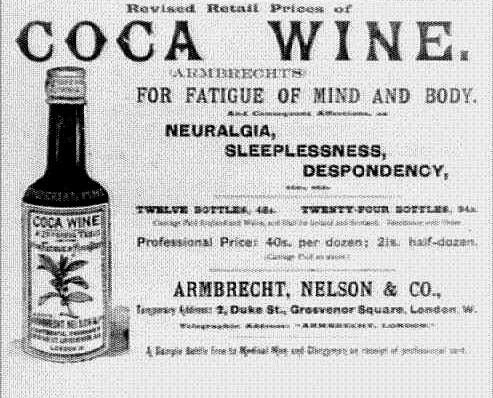
An Atlanta pharmacist began serving a beverage based on Coca Wine. In 1886, Prohibition required him to replace the wine in his drink with a syrup that later evolved to what we now know as Coca Cola.
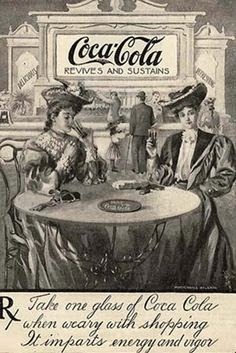
While the formula for Coca-Cola has changed slightly over the years (especially when cocaine was prohibited in 1914), customers have grown to expect a certain taste. So imagine the surprise in 1985 when this product was introduced:

The goal was to make it more competitive by giving the product a new taste. The product was in a major slump, with its market share having dropped to 24 percent, largely due to competition from Pepsi.
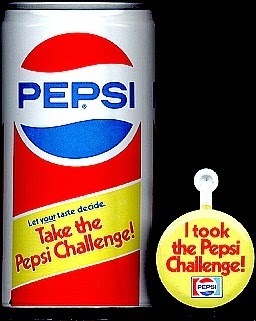
In blind taste tests, New Coke overwhelmingly beat both Coke and Pepsi. Customers said they loved the sweet taste but when asked if they'd drink it if it replaced Coca-Cola, most said they would, but it would take time to get used to it. A small percentage said replacing Coke would make them angry.
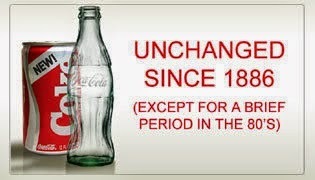
Coke proceeded...and people were angry. Not just "don't buy it" angry, either. A small but very vocal group of people with a lot of free time staged boycotts against the company.
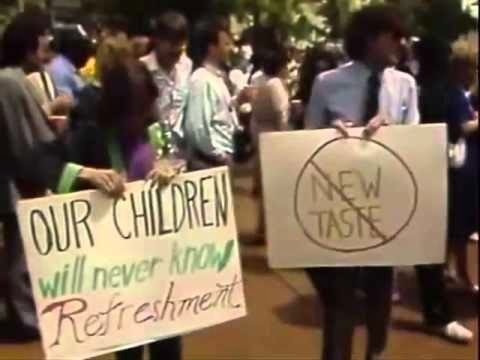
Customers flooded the company's 1-800 lines, reportedly showing the same amount of grief they'd express at the loss of a family member. Coke switched back, spinning the whole mess into a campaign stating that now they're giving Americans more choice than ever. (Classic Coke or New Coke.)
To this day, some speculate that the entire thing was just a marketing ploy to bring Coke loyalists back.
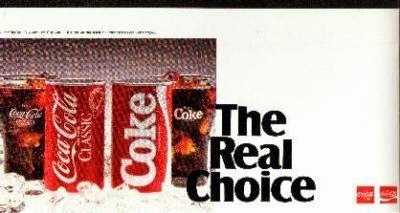
What do you think? Was New Coke just a marketing ploy?

The history of Coca-Cola takes us all the way back to 1863, when an entrepreneur invented Coca Wine. The beverage combined wine with cocaine.

An Atlanta pharmacist began serving a beverage based on Coca Wine. In 1886, Prohibition required him to replace the wine in his drink with a syrup that later evolved to what we now know as Coca Cola.

While the formula for Coca-Cola has changed slightly over the years (especially when cocaine was prohibited in 1914), customers have grown to expect a certain taste. So imagine the surprise in 1985 when this product was introduced:

The goal was to make it more competitive by giving the product a new taste. The product was in a major slump, with its market share having dropped to 24 percent, largely due to competition from Pepsi.

In blind taste tests, New Coke overwhelmingly beat both Coke and Pepsi. Customers said they loved the sweet taste but when asked if they'd drink it if it replaced Coca-Cola, most said they would, but it would take time to get used to it. A small percentage said replacing Coke would make them angry.

Coke proceeded...and people were angry. Not just "don't buy it" angry, either. A small but very vocal group of people with a lot of free time staged boycotts against the company.

Customers flooded the company's 1-800 lines, reportedly showing the same amount of grief they'd express at the loss of a family member. Coke switched back, spinning the whole mess into a campaign stating that now they're giving Americans more choice than ever. (Classic Coke or New Coke.)
To this day, some speculate that the entire thing was just a marketing ploy to bring Coke loyalists back.

What do you think? Was New Coke just a marketing ploy?
Published on April 16, 2015 03:00
April 15, 2015
M is for Malls
This month I'm participating in the A to Z Challenge. My theme is the 80s. Today's letter is:

If you know me, you know from the title of this post that I'm going to enjoy this one! I grew up in the 80s, which means that when I think of shopping, one thing comes to mind:

In the 80s, shopping malls were a little less high tech. And a lot more fun.
 Photo: Michael GalinskyThe above picture was taken by Michael Galinsky, who traveled the country in the 80s, taking pictures inside shopping malls. The result is a look inside a brief period of time when indoor shopping malls were the place to be.
Photo: Michael GalinskyThe above picture was taken by Michael Galinsky, who traveled the country in the 80s, taking pictures inside shopping malls. The result is a look inside a brief period of time when indoor shopping malls were the place to be.
 Photo: Michael GalinskyThe trend has now passed. Instead, today we have "lifestyle centers," which in theory allow you to park in front of the store and run right in.
Photo: Michael GalinskyThe trend has now passed. Instead, today we have "lifestyle centers," which in theory allow you to park in front of the store and run right in.
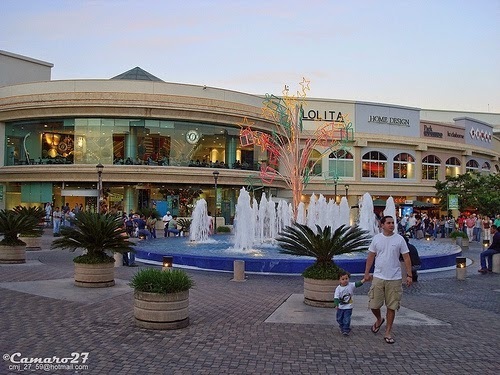
In practice, however, you can't find a parking space and have to walk a half a mile in the cold, rain, or scorching heat, making you long for the days when you could shop comfortably, then stop by the food court for some yummy food.

But if you happen to be watching TV when Fast Times at Ridgemont High or Valley Girl comes on, you can catch some great shots of malls as they were in the 80s, especially in the opening credits.

Are there any good indoor malls left in your town?

If you know me, you know from the title of this post that I'm going to enjoy this one! I grew up in the 80s, which means that when I think of shopping, one thing comes to mind:

In the 80s, shopping malls were a little less high tech. And a lot more fun.
 Photo: Michael GalinskyThe above picture was taken by Michael Galinsky, who traveled the country in the 80s, taking pictures inside shopping malls. The result is a look inside a brief period of time when indoor shopping malls were the place to be.
Photo: Michael GalinskyThe above picture was taken by Michael Galinsky, who traveled the country in the 80s, taking pictures inside shopping malls. The result is a look inside a brief period of time when indoor shopping malls were the place to be. Photo: Michael GalinskyThe trend has now passed. Instead, today we have "lifestyle centers," which in theory allow you to park in front of the store and run right in.
Photo: Michael GalinskyThe trend has now passed. Instead, today we have "lifestyle centers," which in theory allow you to park in front of the store and run right in.
In practice, however, you can't find a parking space and have to walk a half a mile in the cold, rain, or scorching heat, making you long for the days when you could shop comfortably, then stop by the food court for some yummy food.

But if you happen to be watching TV when Fast Times at Ridgemont High or Valley Girl comes on, you can catch some great shots of malls as they were in the 80s, especially in the opening credits.

Are there any good indoor malls left in your town?
Published on April 15, 2015 03:00
April 14, 2015
L is for Live Aid
This month I'm participating in the A to Z Challenge. My theme is the 80s. Today's letter is:

In 1984, two musicians brought together some of the biggest stars in the world for a song. Recorded in just one day and released four days later, the song became this:

Proceeds from the sale of the Christmas song were used to help alleviate poverty in Ethiopia. Inspired by the success, producers set their sights on a summer concert to raise even more funds. On July 13, 1985, Live Aid was held in London and Philadelphia, as well as being televised worldwide. It was the most ambitious international satellite TV event ever at the time.

According to Joan Baez's memoir, Stevie Wonder and Michael Jackson were deliberately absent from the event, even attempting to start a boycott. I couldn't find information on why they were against it but that same year, they were both very much a part of this (notably much more diverse) project to benefit Africa:

USA for Africa is responsible for We Are the World, which sold 20 million copies worldwide. Only 15 songs have sold more than 15 million copies...EVER. Still today, it stands as a tribute to some of the best musical artists of our time. In a sense, it's a musical time capsule:
The trend seemed to have ended in the early 90s, when David Foster gave it one more try.
The song was designed to boost the morale of troops serving in Operation Desert Storm. It did fairly well, but all of the celebrity compilation songs inspired a parody by SNL. Perhaps that is what ended the trend?

Maybe the music industry should give this another try. What do you think?

In 1984, two musicians brought together some of the biggest stars in the world for a song. Recorded in just one day and released four days later, the song became this:

Proceeds from the sale of the Christmas song were used to help alleviate poverty in Ethiopia. Inspired by the success, producers set their sights on a summer concert to raise even more funds. On July 13, 1985, Live Aid was held in London and Philadelphia, as well as being televised worldwide. It was the most ambitious international satellite TV event ever at the time.

According to Joan Baez's memoir, Stevie Wonder and Michael Jackson were deliberately absent from the event, even attempting to start a boycott. I couldn't find information on why they were against it but that same year, they were both very much a part of this (notably much more diverse) project to benefit Africa:

USA for Africa is responsible for We Are the World, which sold 20 million copies worldwide. Only 15 songs have sold more than 15 million copies...EVER. Still today, it stands as a tribute to some of the best musical artists of our time. In a sense, it's a musical time capsule:
The trend seemed to have ended in the early 90s, when David Foster gave it one more try.
The song was designed to boost the morale of troops serving in Operation Desert Storm. It did fairly well, but all of the celebrity compilation songs inspired a parody by SNL. Perhaps that is what ended the trend?

Maybe the music industry should give this another try. What do you think?
Published on April 14, 2015 03:00



